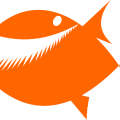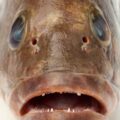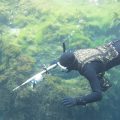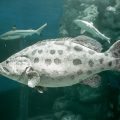The potato grouper is a marine-ray-finned fish species, also known as potato bass or potato cod. It’s a grouper of the Epinephelinae subfamily. You might know that Epinephelinae is a part of the Serranidae family, which includes seabass and anthias as well. The scientific name of this species is Epinephelus tukula. These fish have dark blotches all over their bodies, which resemble potatoes, and that’s where their traditional name derives from. J.F.C Morgans, who used to work at the East African Fisheries Research Organization, described potato groupers formally for the very first time in 1953.
What does a Potato Grouper Look Like?
Potato groupers are typically large in size but smaller than giant groupers. Their length can be up to 2 meters, and their weight can be nearly 110 kg. Their standard length is supposed to be 2.9 to 3.5 times their depth. The region between a potato grouper’s eyes is slightly curved, the backside of its head looks straight, and the preopercle is subangular.
The dorsal fin has 14 to 15 soft rays and 11 spines. On the other hand, there are 8 rays and 3 spines in the anal fin. The membranes potato groupers have between the dorsal and ventral fins are uneven and jagged. The terminal fin, or caudal fin, of these fish is rounded. Their skin color is pale brownish grey, along with many widely separated large dark blotches, and they have small dark spots on the fins. The eyes of this species radiate dark lines.
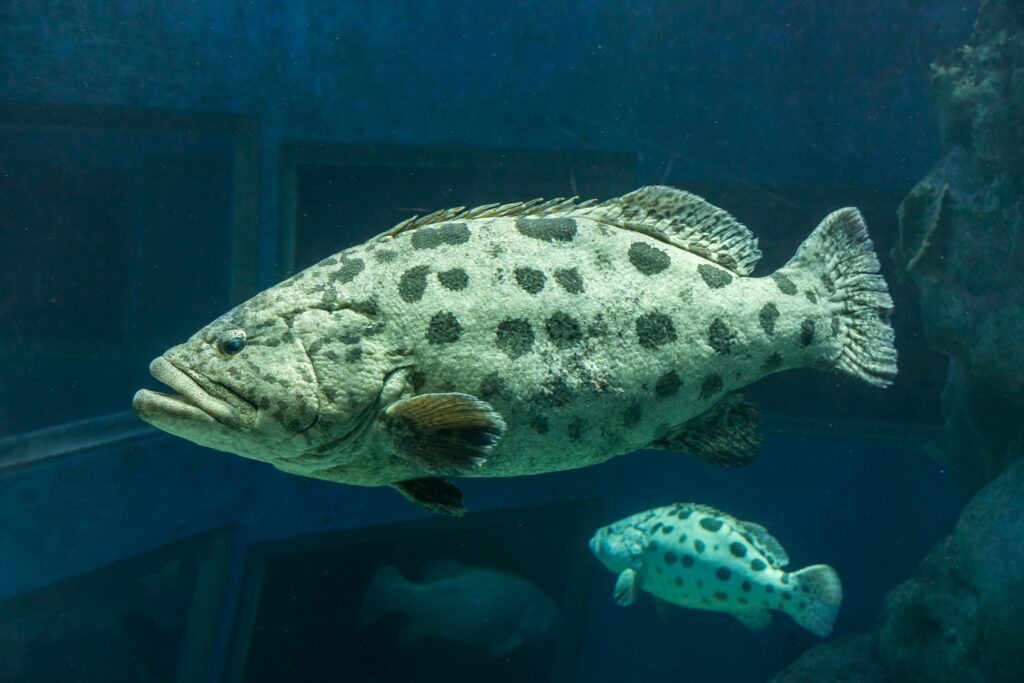
Where Are Potato Groupers Native to?
Potato groupers are almost rare in most areas worldwide, though they have a wide distribution in the Pacific and Indian Oceans. This is typically a non-migratory species and is mostly found on the coast of eastern Africa, especially from the KwaZulu-Natal of South Africa to the Red sea.
Another very common living place for the potato groupers is the Indian Ocean Islands, such as Mauritius, Madagascar, Réunion, and Seychelles. They are also considered quite native to northern Australia and are even found at Shark Bay near western Australia. Potato Groupers are found in Sri Lanka and Japan, as well.
The Utilization of Potato Groupers
The local and artisanal fisheries make the best use of this potato grouper fish species. These are a part of the live food fish trade in China and Hong Kong but eating potato groupers is not very popular in these countries yet. Although potato grouper, or potato cod, are protected in Australia and South Africa, their conservation status is classified as “least concern” by the International Union for Conservation of Nature.
Food Habit and Hunting Technique of Potato Groupers
Potato groupers, being quite large by size, eat large fish, small sharks, and cephalopods like- octopuses, squid, or crustaceans. Groupers are even known to eat an invasive species like lionfish. They are secret attackers or ambush hunters. They dive deep down while searching for food and attack from the back. Potato cods do not chew or bite the prey but swallow it directly. A potato grouper has a large mouth and multiple rows of small needle-like teeth. If anything gets into its huge mouth, it never gets the chance to get out.
How do Potato Groupers Breed?
An interesting fact about potato groupers is that they attain sexual maturity as females first and turn into males later in life. They gain sexual maturity when they are around 12 years old. Their breeding process is quite unique too. For reproduction, the mature potato groupers gather together at certain times of the year.
They start accelerating in the open water to evacuate their seeds for fertilization purposes. Such acceleration helps the eggs to turn into zooplankton. Their larvae quickly hatch and then go down or descend nearly 10 meters to grow in accordance with the temperature of the water there. These fish usually grow slowly, live for 5 to 15 years, and reach their sexual maturity at almost middle age.
Scuba Diving with Potato Groupers
Potato groupers are probably one of the most curious fish species, and you definitely will face them while scuba diving near their territory or coral reef. They are friendly and harmless generally. These fish love to get attention from divers and let them take great underwater pictures from every angle, but not paying attention to them can cause dangers sometimes.
They get easily jealous and try to bother scuba divers by nibbling on loose pieces of diving equipment. Though they will generally not attack humans, being cautious is the safest option. A potato grouper can be a great companion and stay by your side the whole time you dive.
Are Potato Groupers Edible?
Potato groupers are completely edible and have a firm texture along with large flakes. They are delicious in taste, and most locals enjoy having their white meat. The places where potato groupers are not native, eating them isn’t very common, but China and Hong Kong import them.
Potato cods are both nutritious and delicious looking. You can cook them in so many ways, such as baking, frying, grilling, steaming, poaching, and sauteing, and the list is endless.
Interesting Facts about Potato Groupers
There are so many interesting facts about potato groupers. Some of those are mentioned below:
-
- On a coral reef, they are considered one of the largest predators. They are enormous in size and hunt large fish mostly.
-
- Usually, potato groupers hunt during the night time and spend the day time by staying at the cleaning station of the coral reef.
-
- To hold the prey inside, they have small rows of small middle-like pointy teeth inside their enormous mouth.
-
- They swallow the prey as a whole without any biting or chewing.
-
- To reflect their mood, they have the ability to change their body color.
-
- They are a very curious and inquisitive fish species and seek attention from scuba divers.
-
- They first become reproductively mature as females and then turn into males.

